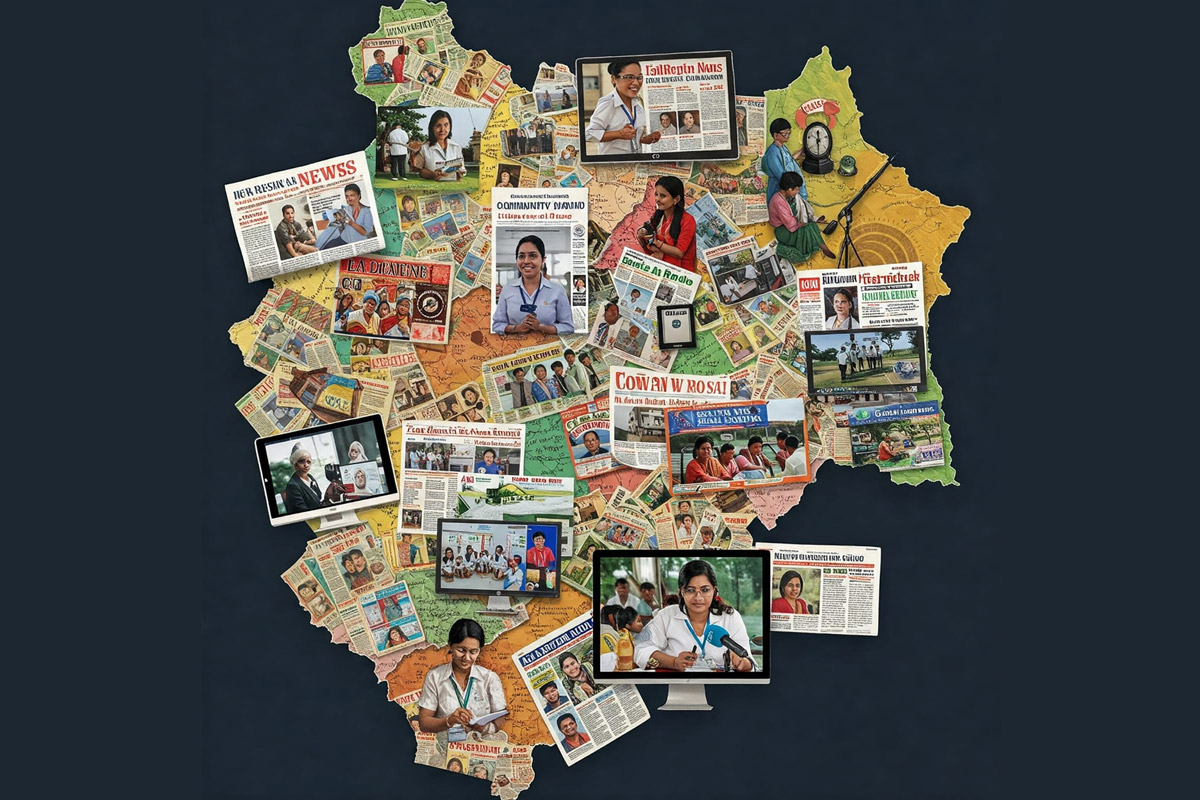
The Importance of Regional Journalism in India’s Media Landscape
India is a nation of remarkable diversity—with over 22 languages and hundreds of dialects. From small villages to bustling metros, every region has its own set of concerns, challenges, and cultural narratives. In such a vast and diverse country, regional journalism plays a critical role in reflecting the local realities of people, communities, and governments.
Regional journalism includes news that is broadcast or published in local languages like Tamil, Bengali, Marathi, Malayalam, Kannada, and others. It focuses on local issues and offers a voice to communities that might be ignored by national media. From newspapers to digital platforms, regional journalism ensures that the stories that matter most to local populations are told.
As educators and students in the field of media studies, it is crucial to understand why regional journalism is not just important, but essential for the health of India’s democracy.
The Importance of Regional Journalism
1. Local News for Local People
Regional journalists are often the first to report on local issues such as:
Agricultural crises in rural areas
Local governance issues (panchayat elections, municipal problems)
Socio-economic challenges faced by marginalized communities
These issues are often ignored by national media, which tends to focus on high-profile stories from metro cities. For instance, Gaon Connection, a Hindi-language platform in Uttar Pradesh, covered the struggles of farmers during the COVID-19 lockdown, highlighting the lack of proper government support and the challenges faced by rural populations.
2. Language and Trust
One of the most crucial aspects of regional journalism is that it is published or broadcast in a local language. When news is shared in one’s mother tongue, it is much easier for people to understand and trust the information.
Mathrubhumi, a Malayalam-language newspaper from Kerala, is a classic example of how language-based journalism can create a deep connection with its audience. It has been instrumental in reporting on state-level issues, such as the Kerala floods of 2018, providing timely updates and helping coordinate relief efforts.
3. Voice of the Marginalized
Regional journalism often serves as the voice of the marginalized—tribal communities, rural farmers, migrant workers, and women. These groups are often excluded from national conversations but can find space in local media. Khabar Lahariya, a platform run by women from rural Uttar Pradesh and Bihar, provides important coverage on gender equality, local governance, and the struggles of rural communities.
During the farmers’ protests, many regional platforms like ETV News in Andhra Pradesh and Telangana were among the first to cover the ground reality of farmers’ challenges, raising awareness about their demands on a much-needed state and national level.
Challenges in Regional Journalism
While regional journalism plays a vital role, it also faces several challenges:
1. Limited Resources
Many regional outlets operate on a shoestring budget. They struggle to compete with larger, national media houses that have the resources for extensive newsrooms, advanced technology, and a large staff. Despite this, platforms like The Bastion, which focuses on Jammu & Kashmir and North-East India, continue to thrive by offering in-depth, investigative journalism about regional issues that are often ignored by national media.
2. Press Freedom and Safety Concerns
Local journalists are often at risk of threats and harassment. In regions where corruption or political tension is high, reporting the truth can be dangerous. For instance, Khabar Lahariya journalists often face challenges while reporting in rural areas where caste-based violence and discrimination are prevalent.
3. Technological Divide
While major cities have access to high-speed internet, many rural and regional journalists still depend on traditional media formats like print or FM radio. Platforms like One India, which provides news in multiple regional languages, are using digital tools to bridge the gap, but many smaller outlets still face challenges in reaching audiences online due to the digital divide.
How Digital Media Is Helping Regional Journalism
Ironically, the digital age that posed challenges to traditional regional journalism is now offering a new wave of opportunities. With the rise of platforms like YouTube, WhatsApp, and Facebook, regional media outlets are now able to reach a broader audience and increase engagement.
Gaon Connection and Khabar Lahariya have leveraged social media and mobile journalism to bring local stories to a larger audience. During the COVID-19 pandemic, The Bastion used digital tools to report on the revocation of Article 370 in Jammu and Kashmir, providing real-time updates and community-centered reporting.
What Academic Institutions Can Do
As educators, we have a responsibility to foster an understanding of regional journalism’s importance among students. Academic institutions should:
Incorporate regional media studies into their curriculum, encouraging students to explore local stories and regional issues.
Create opportunities for field reporting in rural areas, allowing students to experience first-hand how regional journalism operates.
Invite regional journalists for guest lectures and workshops to give students a direct understanding of the challenges and rewards of working in regional media.
By supporting regional journalism, we can help strengthen democracy and provide a more inclusive media landscape for all communities.
Regional journalism is the backbone of democracy in India. It is vital for ensuring that the voices of people in smaller towns and villages are heard. Through local news, people learn about their rights, government policies, and community issues. As we move forward, we must recognize the essential role that regional media plays in shaping a well-informed citizenry.
Platforms like Khabar Lahariya, Gaon Connection, ETV News, and The Bastion continue to prove that even in the face of financial and political challenges, regional journalism can empower communities and hold those in power accountable.
In the classroom and beyond, let us continue to champion regional journalism and ensure that every voice, every community, and every language finds its rightful place in the media landscape.



